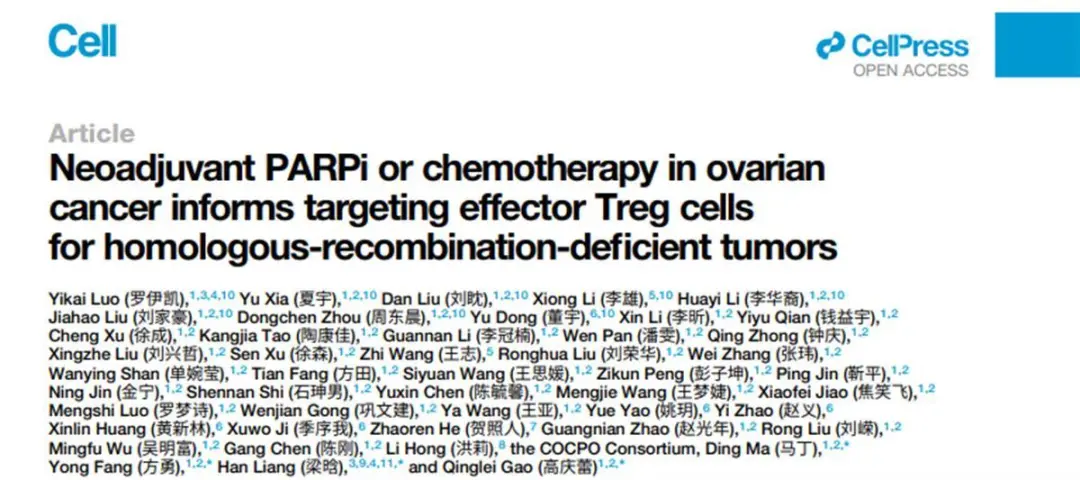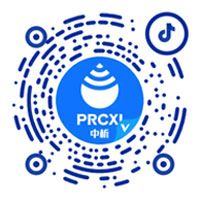In July, Academician Martin, Professor Gao Qinglei and Professor Fang Yong from Tongji Hospital, Tongji Medical College, Huazhong University of Science and Technology, together with Professor Liang Han's team from the University of Texas M.D. Anderson Cancer Center in the United States, published an important research result on ovarian cancer treatment in the top scientific journal Cell, titled, "Ovarian Cancer Neoadjuvant PARP Inhibitor or Chemotherapy Reveals Homologous Recombination-Deficient eTreg cells, a new target for tumor therapy".

Background
The study focused on highly lethal high plasma ovarian cancers, which account for 70% of all ovarian cancer cases. The current standard of care, platinum-based neoadjuvant chemotherapy, responds well initially but is susceptible to drug resistance, resulting in a five-year survival rate hovering at 30%, and a much-needed improvement in the prognosis of patients.
Introduce
As a groundbreaking contribution to the field of gynecologic oncology, the study elucidated for the first time the significant differences in tumor microenvironmental characteristics between homologous recombination repair-deficient (HRD) and defective (HRP) ovarian cancers through a prospective clinical trial and in-depth multi-omics analysis. The study not only validated the significant efficacy of the oral PARP inhibitor niraparib in the treatment of high-grade plasma ovarian cancer and its potential as a neoadjuvant therapeutic strategy, but also innovatively proposed a novel immunotherapeutic regimen of niraparib in combination with CCR8 monoclonal antibody, targeting HRD tumors with a strategy of eTreg cell clearance.

Relying on the rich resources of NANT clinical trials, the research team systematically collected ovarian cancer tissue and blood samples before and after niraparib monotherapy and platinum-containing chemotherapy, combined with clinical HRD assays, single-cell transcriptome sequencing, T-lymphocyte receptor sequencing analysis, and advanced immunohistochemistry and flow cytometry technologies, revealing the following key findings:
1. The immune microenvironment of HRD-positive ovarian cancer was more active, especially the proportion of proliferative and IFN-reactive CD4/8+ T lymphocytes was significantly increased.
2. The proportion of IFN-reactive tumor cells was positively correlated with the proportion of eTreg cells, a mechanism closely related to the activation of the IFN-MHC II pathway in tumor cells.
3. HRD-positive tumors were negatively regulated by eTreg cells, and both niraparib and platinum-based chemotherapeutic agents were effective in reversing this regulation, which in turn reduced the tumor load (manifested as a decrease in CA125 levels).
Outlook and Summary
After four years of relentless exploration, the research team has successfully identified a new therapeutic target, eTreg, through large-scale single-cell sequencing and target screening. Prof. Gao Qinglei emphasized that this discovery not only marks a new era of targeted immunotherapy for ovarian cancer, but also opens up a broad prospect for the application of precision medicine in the treatment of ovarian cancer.
It is particularly worth mentioning that the publication of this research result, which appeared in CELL for the first time in Chinese characters, highlights the important influence and contribution of Chinese scientists in the global scientific research arena.
Reference source:https://www.cell.com/cell/fulltext/S0092-8674(24)00653-6



